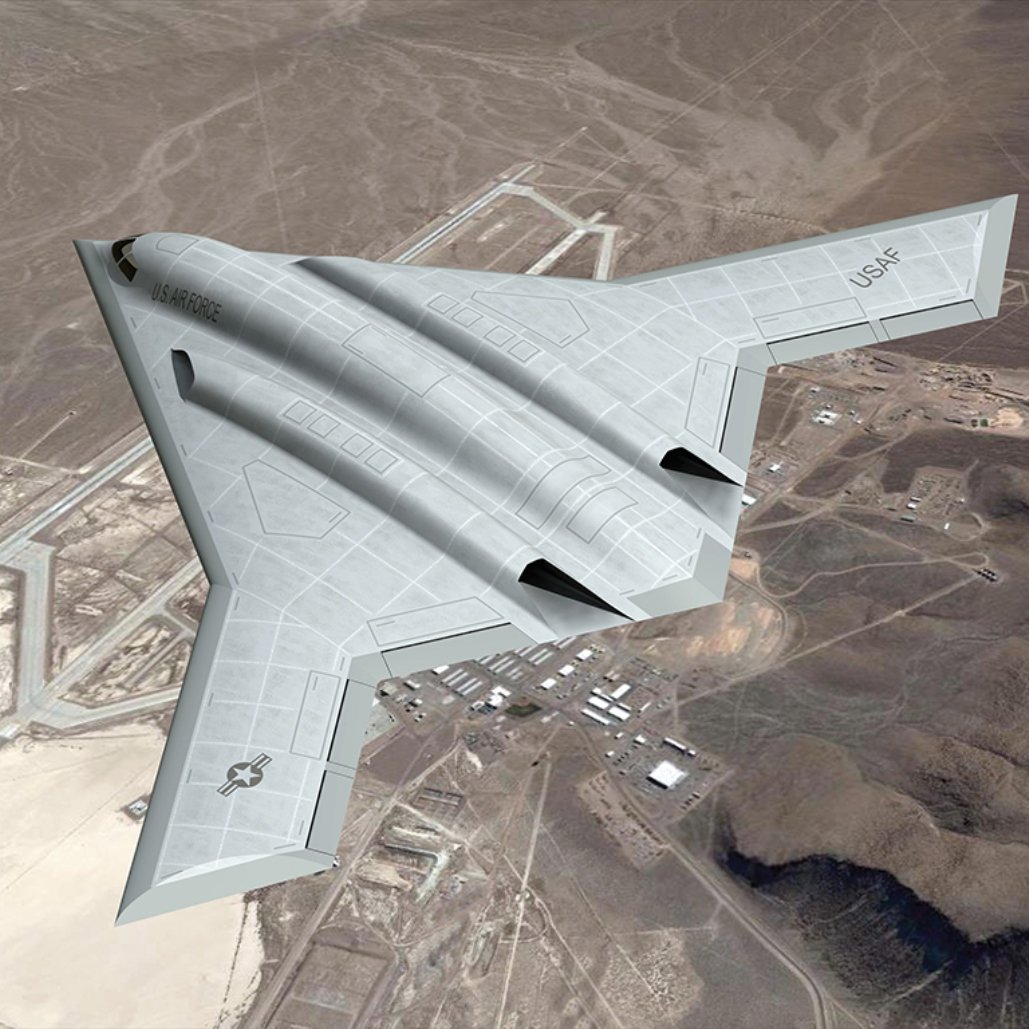

Less than a month after his election, President Trump tweeted out his displeasure with what he said was the $4 billion cost to build a fleet of two presidential planes as the new Air Force One. After meeting with Boeing Co. (NYSE: BA) CEO Dennis Muilenburg, everything seemed sorted out on the cost of the plane. Until last Friday.
Aviation Week reported that a panel of aerospace and defense analysts has proposed dumping Boeing’s 747-8 as the next generation Air Force One and using instead Northrop Grumman Corp.’s (NYSE: NOC) B-21 stealth bomber or a militarized version of Boeing’s 737.
Cost management consulting firm Wright Williams & Kelly (WWK), at the direction of Defense Secretary James Mattis who ordered a review of the Air Force One program, concluded that modifying the requirements for a four-engine plane that can carry more than 70 passengers could “significantly” reduce the cost of the Air Force One fleet.
Northrop Grumman’s B-21 has one big advantage: its stealth capability is much safer in an age when “the proliferation of high-tech surface-to-air missiles to ‘non-state actors and guerrilla groups'” presents a serious threat to a 747-based Air Force One. WWK spokesman Danny Lam told Aviation Week:
The 747 is a fat radar target, about the size of a B-52. [The B-21] has stealth built in, it’s nuclear-rated and heavily shielded right off the bat. It’s going to be terribly cramped but man, it would be a survivable platform, especially if operated in twos and threes.
Initial deployment of the B-21 is currently set for middle of the next decade, roughly in line with the 2024 delivery date for the 747-based Air Force One.
The biggest drawback is the number of passengers a B-21 could carry. Lam said that modifications to the plane’s internal weapons bay and other compartments would allow the plane to carry a “handful” of passengers. To accommodate the president’s entourage of advisers and journalists, separate planes would be needed, but those could be less expensive 737s or even non-Boeing aircraft from Airbus, Bombardier or Embraer.
The least expensive option to the 747 is to replace Air Force One with a 737, of which several militarized versions already exist. A militarized 737 would save the one-time cost of militarizing a 747 and “probably meet most of their needs” according to WWK’s Lam.
Then, of course, there are the optics. Says Lam:
What image do you want to project? An aircraft that’s going out of production? Or that you’re dealing with a nation that is deadly serious about going to war if you’re not careful. Is that the image we want to project? That’s a policy decision. But suppose you’re a little power who wants to take out the president of the U.S. with a surprise attack. I would say the deterrent effect of showing up in a very, very well-protected, heavily-armed aircraft with multiple planes—I’d think twice.
Aviation Week has more details and an artist’s rendering of what a B-21 version of Air Force One would look like. Not as benign as the hump-backed 747 is it? But is that a good thing or not?
Smart Investors Are Quietly Loading Up on These “Dividend Legends” (Sponsored)
If you want your portfolio to pay you cash like clockwork, it’s time to stop blindly following conventional wisdom like relying on Dividend Aristocrats. There’s a better option, and we want to show you. We’re offering a brand-new report on 2 stocks we believe offer the rare combination of a high dividend yield and significant stock appreciation upside. If you’re tired of feeling one step behind in this market, this free report is a must-read for you.
Click here to download your FREE copy of “2 Dividend Legends to Hold Forever” and start improving your portfolio today.
Thank you for reading! Have some feedback for us?
Contact the 24/7 Wall St. editorial team.